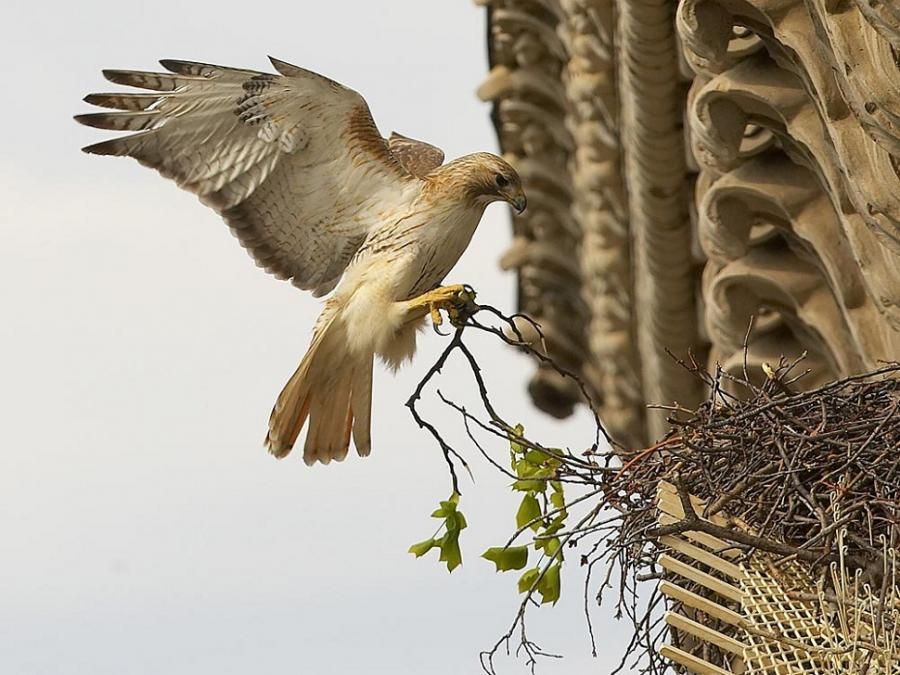
Urbanization is perhaps the most difficult challenge to the survival of birds and will be the major driver of extinction in this century. Only 2.7 percent of the earth is covered by cities yet the majority of the human population lives in them. By the year 2050, as many people will live in cities as are alive today – 7.5 billion. In addition to habitat disruption the effect of urbanization is intense because of all it encompasses. Added to the blanket alterations of bird habitats, burying them under tons of cement, brick, and steel, cities mean people, often many crowded together. As you would expect, the number of birds in a city is inversely proportional to the number of people. There are also vehicles, lights, and noise. Having recently spent a week in the Big Apple, I looked but saw few birds, virtually all of them pigeons or House Sparrows. Cities are a drastic change from native ecosystems.
It is not as if birds are disappearing under asphalt and bricks without a fight. There are many examples of birds adjusting to, and even benefitting from, human activity, particularly Rock Pigeons, House Sparrows and the European Starling. In fact, over 20 percent of the world’s bird species are represented in cities. Blue and Gold Macaws have adapted to city life in Caracas, Venezuela, a city of six million people, surviving on what they can forage and what the locals leave out for them. The macaw is native to much of South America but not to the valley that holds Caracas. Local legend has it that an Italian immigrant, Vittorio Poggi, rode around the city on his motorcycle with a macaw he trained to fly alongside. He eventually released 100 more birds which he bought, bred, or were given to him by owners who no longer wanted them as pets.
A 2007 study of 73 major cities across the world compared urban birds to their close relatives in the wild and found that the native ranges of urban birds are wider in latitude and altitude than those bird species that have not invaded cities. The House Sparrow, for example, was native to Europe, most of the Middle East, a large portion of Asia and a bit of Africa. The native range of the European Starling is similar but a bit smaller. Urban birds tend to be generalists and tend to have considerable behavioral, physiological and ecological flexibility.
Feral pigeons and House Sparrows have been associated with humans and their habitations for thousands of years and so the populations of these birds are higher in urban than nearby rural habitats. Overall, urban bird populations average 30 percent higher than nearby rural populations of the same species. Since the 1950s, 47 bird species living in the inner city of Warsaw, Poland, have diminished in number or disappeared as the city grew, but 37 species increased their populations and twelve new bird species colonized the city. About 114 bird species utilize cities or suburbs worldwide for part or all of their lifespan. Gulls, vultures, ravens and crows hang out at garbage dumps and along roadways looking for scraps. Hummingbirds, towhees, chickadees, nuthatches, sparrows, doves, finches, jays and woodpeckers frequent bird feeders. Falcons, hawks, and owls even nest in cities as there is abundant prey for them. George and Gracie, a Peregrine Falcon pair, have been nesting on a San Francisco building since 2005; in 2014 they nested in a 30th floor planter on a financial district skyscraper. There is a famous Red-tailed Hawk in New York City, dubbed “Pale Male” because of his light colored head, which has nested on an apartment building overhang on Fifth Avenue for 24 years with a new female about every three years.
The populations year-round city resident birds have held steady or showed a strong increase over the past 40 years, especially birds like vultures, turkeys, gulls, and the House Finch. Human-created food for city birds is super-abundant, allowing bird populations to expand considerably. Additionally, and paradoxically, domestic predators (dogs and cats) are abundant as well, but predation pressure is low. Dogs and cats also have human food to rely on and birds have an infinite number of hiding places to escape to. Migratory birds which only use urban areas for nesting, such as Common Nighthawks and Chimney Swifts are on the decline. The competition for food and nesting sites with the growing populations of sedentary urban birds is too great for migratory ones.